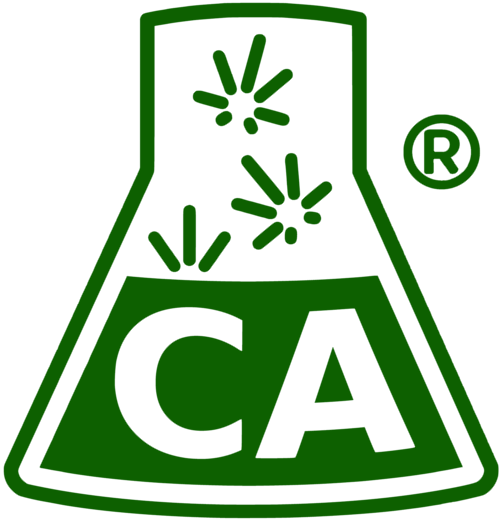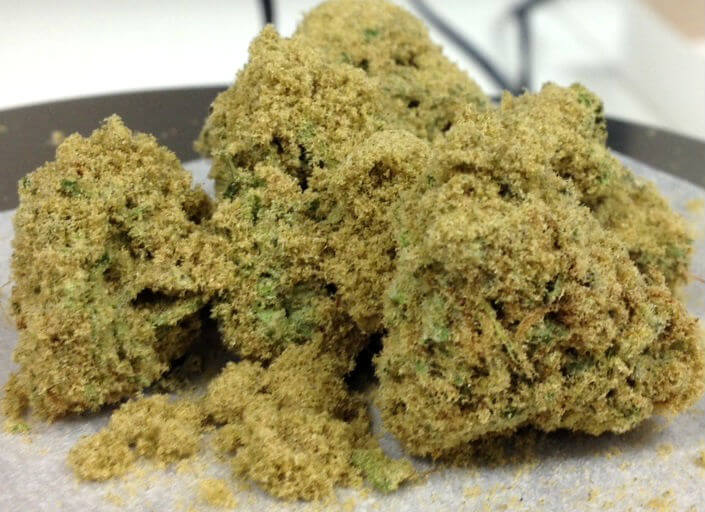While most growers strive to improve their product with careful growing techniques and handling, there are a few who attempt to employ more…questionable means. As an analytical laboratory operating in a competitive market, the receipt of doctored samples puts us in an awkward position. We’re not generally in the business of turning away samples, but there are times when scientific integrity demands it. While not pleasant, those moments of confrontation allow us moments like this – when we can assure our honest clients (the vast majority) that we are paying attention and we do care about fairness in testing. We will not be complicit in practices that give one or more growers an unfair advantage over others.
For example, exhibits A-C:
A.
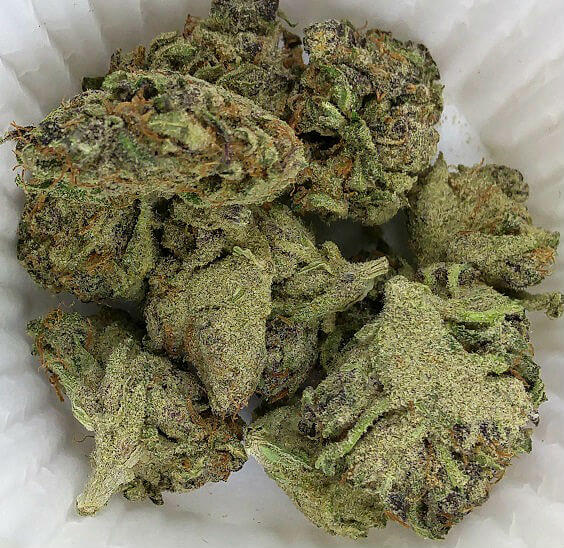
B.
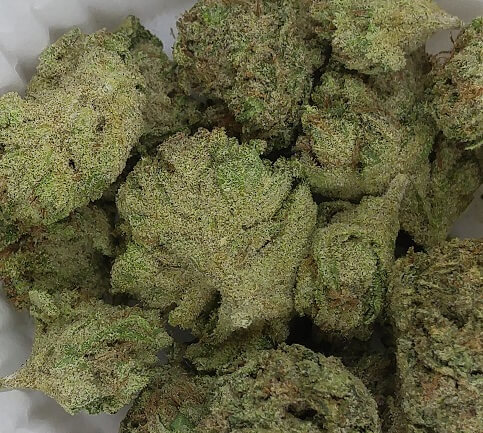
C.
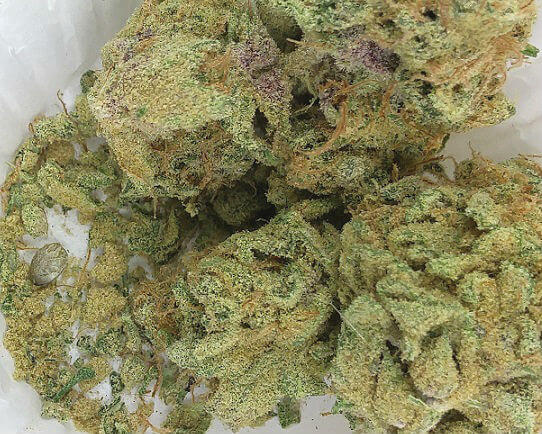
By our standards, these examples all fail the foreign matter inspection due to significant quantity of kief present. The kief has been mechanically separated from its native position and then reintroduced in greater quantity, and that description meets the definition of foreign matter. When we receive “Flower Lots” like those pictured above, they fail if the foreign matter is greater than 2%. The only alternative for those who want to sell kiefed bud is to call them what they are — caviar/space rocks/moon balls/amazeballs or any other name for “infused” product — and the only appropriate designation for these in traceability is “Infused Marijuana Mix”, not “Flower Lot”.
Matters of fairness aside, there are several other very good reasons to discourage deception:
- It hurts morale – If one or two producers are known to cheat, this can lead to the impression that it’s common practice when it most certainly is not. An atmosphere of mistrust is bad for the industry, damaging both public perception and the attitudes of producers.
- Kief is dirty – Due to its presence on the surface of the plant, kief is more exposed to environmental contaminants and it is prone to mold. Just as kief has a higher concentration of cannabinoids, it also has a higher propensity to harbor microbes. A quick crunch of our data shows kief failing the microbial screen at a rate that is nearly three times that of flower samples.
- Not worth the risk – Just how much kief would it take to significantly increase THC content of a flower sample? More than you’d probably guess, and far more than could be added without being mind-bogglingly obvious about it.
Let’s say we’ve got a 2-gram flower sample with 12% active THC content and a supply of kief with 35% active THC. How much kief would have to be added to the flower for a more marketable THC number like, say, 17%?
12%( 2g flower ) + 35%( Xg kief ) = 17%( 2g flower + Xg kief )
X = 0.55g
That’s over half a gram of kief attempting to (inconspicuously) adhere to 2g of bud! That’s a whopping 20% of the entire mass. In case you’re wondering what that looks like…
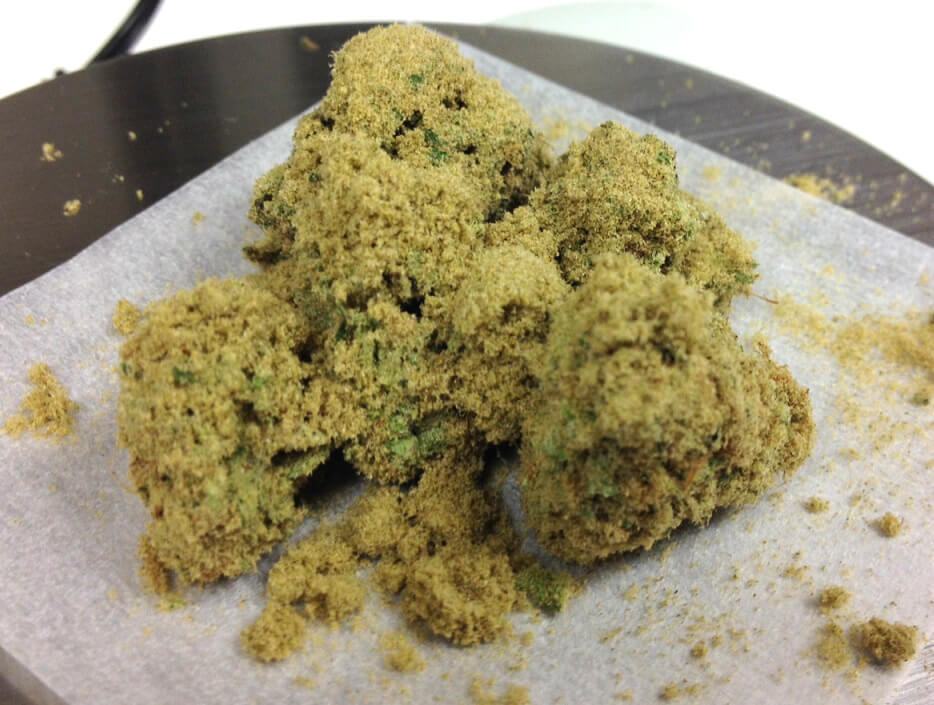
Now that we’ve seen several examples of how not to do it, this might be a good time to discuss the new sampling protocol proposed by the WSLCB. The most recent draft of LCB rule changes contains several instructions for selecting flower samples for QA testing.
- “Licensees or certified third-party labs are required to deduct four separate samples from each marijuana flower lot…The four samples must be of equal weight, not less than one gram each.” It’s further required that each gram come from a different “quadrant” of the lot. The lot can be quartered visually or physically before sampling, but the idea is to get a more representative sample by pulling from different areas in the lot. The four pieces will be bagged together as one laboratory QA sample.
- The new protocol requires that flower samples be submitted with the plant structures intact. This means whole flower on the stem. No pre-grinding.
- Samples must not be altered in any way that might inflate potency or hide microbial contamination. The rule specifically prohibits “Adulterating the sample with kief, concentrates, or other extracts” and “Treating a sample with solvents to hide the microbial count of the lot or batch from which it was deducted.”
- Both the laboratory and the producer can face sanctions for failure to comply with these rules. We’ve heard from the LCB that the traceability system will soon be requiring the initials of the person selecting the sample as a declaration that they selected it in a representative fashion in compliance with the code while under camera surveillance.
Look for further updates from the WSLCB and emails from Confidence Analytics regarding rule changes. We will try our best to keep our customers informed, and will of course provide plenty of warning before any real change in process is required. While we realize the 4-gram flower size presents greater expense for producers and processors, we applaud any effort to ensure QA testing truly reflects the properties of a marijuana lot. Larger sample size will stabilize potency numbers for many, reducing the chance that an unrepresentative sample will be chosen by chance. The risk of an erroneous microbial result also falls with larger sample size, since it mediates the effect of variation across the lot (i.e. you’re less likely to by chance select a sample that is “dirtier” than the lot overall). If you want to learn more about sample selection, visit our FAQ page.
